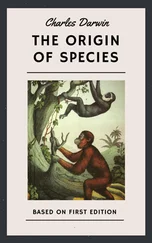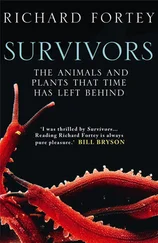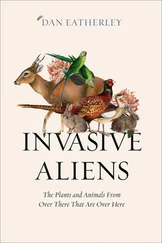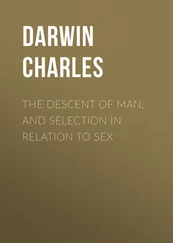Charles Darwin - The Variation of Animals and Plants under Domestication — Volume 1
Здесь есть возможность читать онлайн «Charles Darwin - The Variation of Animals and Plants under Domestication — Volume 1» — ознакомительный отрывок электронной книги совершенно бесплатно, а после прочтения отрывка купить полную версию. В некоторых случаях можно слушать аудио, скачать через торрент в формате fb2 и присутствует краткое содержание. Жанр: foreign_antique, foreign_prose, на английском языке. Описание произведения, (предисловие) а так же отзывы посетителей доступны на портале библиотеки ЛибКат.
- Название:The Variation of Animals and Plants under Domestication — Volume 1
- Автор:
- Жанр:
- Год:неизвестен
- ISBN:нет данных
- Рейтинг книги:5 / 5. Голосов: 1
-
Избранное:Добавить в избранное
- Отзывы:
-
Ваша оценка:
- 100
- 1
- 2
- 3
- 4
- 5
The Variation of Animals and Plants under Domestication — Volume 1: краткое содержание, описание и аннотация
Предлагаем к чтению аннотацию, описание, краткое содержание или предисловие (зависит от того, что написал сам автор книги «The Variation of Animals and Plants under Domestication — Volume 1»). Если вы не нашли необходимую информацию о книге — напишите в комментариях, мы постараемся отыскать её.
The Variation of Animals and Plants under Domestication — Volume 1 — читать онлайн ознакомительный отрывок
Ниже представлен текст книги, разбитый по страницам. Система сохранения места последней прочитанной страницы, позволяет с удобством читать онлайн бесплатно книгу «The Variation of Animals and Plants under Domestication — Volume 1», без необходимости каждый раз заново искать на чём Вы остановились. Поставьте закладку, и сможете в любой момент перейти на страницу, на которой закончили чтение.
Интервал:
Закладка:
It is the consideration and explanation of such facts as these which has convinced me that the theory of descent with modification by means of natural selection is in the main true. These facts have as yet received no explanation on the theory of independent Creation; they cannot be grouped together under one point of view, but each has to be considered as an ultimate fact. As the first origin of life on this earth, as well as the continued life of each individual, is at present quite beyond the scope of science, I do not wish to lay much stress on the greater simplicity of the view of a few forms or of only one form having been originally created, instead of innumerable miraculous creations having been necessary at innumerable periods; though this more simple view accords well with Maupertuis's philosophical axiom of "least action."
In considering how far the theory of natural selection may be extended, — that is, in determining from how many progenitors the inhabitants of the world have descended, — we may conclude that at least all the members of the same class have descended from a single ancestor. A number of organic beings are included in the same class, because they present, independently of their habits of life, the same fundamental type of structure, and because they graduate into each other. Moreover, members of the same class can in most cases be shown to be closely alike at an early embryonic age. These facts can be explained on the belief of their descent from a common form; therefore it may be safely admitted that all the members of the same class are descended from one progenitor. But as the members of quite distinct classes have something in common in structure and much in common in constitution, analogy would lead us one step further, and to infer as probable that all living creatures are descended from a single prototype.
I hope that the reader will pause before coming to any final and hostile conclusion on the theory of natural selection. The reader may consult my 'Origin of Species' for a general sketch of the whole subject; but in that work he has to take many statements on trust. In considering the theory of natural selection, he will assuredly meet with weighty difficulties, but these difficulties relate chiefly to subjects — such as the degree of perfection of the geological record, the means of distribution, the possibility of transitions in organs, etc. — on which we are confessedly ignorant; nor do we know how ignorant we are. If we are much more ignorant than is generally supposed, most of these difficulties wholly disappear. Let the reader reflect on the difficulty of looking at whole classes of facts from a new point of view. Let him observe how slowly, but surely, the noble views of Lyell on the gradual changes now in progress on the earth's surface have been accepted as sufficient to account for all that we see in its past history. The present action of natural selection may seem more or less probable; but I believe in the truth of the theory, because it collects, under one point of view, and gives a rational explanation of, many apparently independent classes of facts. (Introduction/4. In treating the several subjects included in the present and my other works I have continually been led to ask for information from many zoologists, botanists, geologists, breeders of animals, and horticulturists, and I have invariably received from them the most generous assistance. Without such aid I could have effected little. I have repeatedly applied for information and specimens to foreigners, and to British merchants and officers of the Government residing in distant lands, and, with the rarest exceptions, I have received prompt, open-handed, and valuable assistance. I cannot express too strongly my obligations to the many persons who have assisted me, and who, I am convinced, would be equally willing to assist others in any scientific investigation.)
CHAPTER 1.I
DOMESTIC DOGS AND CATS.
ANCIENT VARIETIES OF THE DOG. RESEMBLANCE OF DOMESTIC DOGS IN VARIOUS COUNTRIES TO NATIVE CANINE SPECIES. ANIMALS NOT ACQUAINTED WITH MAN AT FIRST FEARLESS. DOGS RESEMBLING WOLVES AND JACKALS. HABIT OF BARKING ACQUIRED AND LOST. FERAL DOGS. TAN-COLOURED EYE-SPOTS. PERIOD OF GESTATION. OFFENSIVE ODOUR. FERTILITY OF THE RACES WHEN CROSSED. DIFFERENCES IN THE SEVERAL RACES IN PART DUE TO DESCENT FROM DISTINCT SPECIES. DIFFERENCES IN THE SKULL AND TEETH. DIFFERENCES IN THE BODY, IN CONSTITUTION. FEW IMPORTANT DIFFERENCES HAVE BEEN FIXED BY SELECTION. DIRECT ACTION OF CLIMATE. WATER-DOGS WITH PALMATED FEET. HISTORY OF THE CHANGES WHICH CERTAIN ENGLISH RACES OF THE DOG HAVE GRADUALLY UNDERGONE THROUGH SELECTION. EXTINCTION OF THE LESS IMPROVED SUB-BREEDS.
CATS, CROSSED WITH SEVERAL SPECIES. DIFFERENT BREEDS FOUND ONLY IN SEPARATED COUNTRIES. DIRECT EFFECTS OF THE CONDITIONS OF LIFE. FERAL CATS. INDIVIDUAL VARIABILITY.
The first and chief point of interest in this chapter is, whether the numerous domesticated varieties of the dog have descended from a single wild species, or from several. Some authors believe that all have descended from the wolf, or from the jackal, or from an unknown and extinct species. Others again believe, and this of late has been the favourite tenet, that they have descended from several species, extinct and recent, more or less commingled together. We shall probably never be able to ascertain their origin with certainty. Palaeontology (1/1. Owen 'British Fossil Mammals' pages 123 to 133. Pictet 'Traite de Pal.' 1853 tome 1 page 202. De Blainville in his 'Osteographie, Canidae' page 142 has largely discussed the whole subject, and concludes that the extinct parent of all domesticated dogs came nearest to the wolf in organisation, and to the jackal in habits. See also Boyd Dawkins, 'Cave Hunting' 1874 page 131 etc. and his other publications. Jeitteles has discussed in great detail the character of the breeds of pre-historic dogs: 'Die vorgeschichtlichen Alterthumer der Stadt Olmutz' II. Theil, 1872 page 44 to end.) does not throw much light on the question, owing, on the one hand, to the close similarity of the skulls of extinct as well as living wolves and jackals, and owing, on the other hand, to the great dissimilarity of the skulls of the several breeds of the domestic dogs. It seems, however, that remains have been found in the later tertiary deposits more like those of a large dog than of a wolf, which favours the belief of De Blainville that our dogs are the descendants of a single extinct species. On the other hand, some authors go so far as to assert that every chief domestic breed must have had its wild prototype. This latter view is extremely improbable: it allows nothing for variation; it passes over the almost monstrous character of some of the breeds; and it almost necessarily assumes that a large number of species have become extinct since man domesticated the dog; whereas we plainly see that wild members of the dog-family are extirpated by human agency with much difficulty; even so recently as 1710 the wolf existed in so small an island as Ireland.
The reasons which have led various authors to infer that our dogs have descended from more than one wild species are as follows. (1/2. Pallas, I believe, originated this doctrine in 'Act. Acad. St. Petersburgh' 1780 Part 2. Ehrenberg has advocated it, as may be seen in De Blainville's 'Osteographie' page 79. It has been carried to an extreme extent by Col. Hamilton Smith in the 'Naturalist Library' volumes 9 and 10. Mr. W.C. Martin adopts it in his excellent 'History of the Dog' 1845; as does Dr. Morton, as well as Nott and Gliddon, in the United States. Prof. Low, in his 'Domesticated Animals' 1845 page 666, comes to this same conclusion. No one has argued on this side with more clearness and force than the late James Wilson, of Edinburgh, in various papers read before the Highland Agricultural and Wernerian Societies. Isidore Geoffroy Saint-Hilaire ('Hist. Nat. Gen.' 1860 tome 3 page 107), though he believes that most dogs have descended from the jackal, yet inclines to the belief that some are descended from the wolf. Prof. Gervais ('Hist. Nat. Mamm.' 1855 tome 2 page 69, referring to the view that all the domestic races are the modified descendants of a single species, after a long discussion, says, "Cette opinion est, suivant nous du moins, la moins probable.") Firstly, the great difference between the several breeds; but this will appear of comparatively little weight, after we shall have seen how great are the differences between the several races of various domesticated animals which certainly have descended from a single parent-form. Secondly, the more important fact, that, at the most anciently known historical periods, several breeds of the dog existed, very unlike each other, and closely resembling or identical with breeds still alive.
Читать дальшеИнтервал:
Закладка:
Похожие книги на «The Variation of Animals and Plants under Domestication — Volume 1»
Представляем Вашему вниманию похожие книги на «The Variation of Animals and Plants under Domestication — Volume 1» списком для выбора. Мы отобрали схожую по названию и смыслу литературу в надежде предоставить читателям больше вариантов отыскать новые, интересные, ещё непрочитанные произведения.
Обсуждение, отзывы о книге «The Variation of Animals and Plants under Domestication — Volume 1» и просто собственные мнения читателей. Оставьте ваши комментарии, напишите, что Вы думаете о произведении, его смысле или главных героях. Укажите что конкретно понравилось, а что нет, и почему Вы так считаете.












